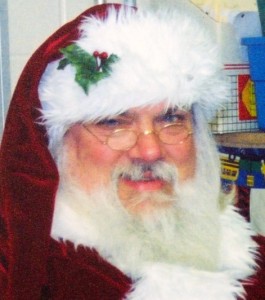Many of our elder law clients live at
Countryside Care Center in Aurora, Illinois. We hear from our clients and their families that great care is provided for both private pay and Medicaid clients.
When we are asked by families to recommend a skilled care facility, we often say, “Choose the care, not the curtains!” In other words, investigate what it’s like to live in a facility—don’t just judge the place by the décor and the architecture.
Recently, I had the pleasure of taking a tour of Countryside Care Center to get to know the staff better. Jean Bennett, Marketing Manager, greeted me and introduced me to Anthony Clark, R.N., Clinical Nurse Manager and Physician Liaison (pictured on the left in the photo above). After telling me some of his favorite lawyer jokes, he showed me a whole new way to think about long-term care nursing.
Q: Anthony, why do you serve here at Countryside?
A: I had wanted to get an operating room position, but due to circumstances, I decided to apply here. Actually, an operating room job can be easier, because you never get attached to the patients—and most of the time… you win!—the patient gets well. But in a nursing home facility, you experience just the opposite. You spend long periods of time building relationships with people, and then you face the reality of their inevitable death. You have to learn how to deal with your grief.
That’s one of the real challenges of being a part of a long term care setting. Ultimately, you will lose someone you care about. I try to focus on providing our residents with comfort, care, and friendship. I have a lot of friends who live here.
Q: How do you and your staff find job satisfaction working in the nursing home at Countryside?
A: One of the greatest things we have here at Countryside is our Reminiscence Boulevard; that’s our memory enrichment wing. Our staff go out of their way to love and care for our residents. They smile, joke, sing, and dance together. The staff on the Boulevard take pride in what they do. They do their work well, and the residents and the residents’ families come to trust each one of them.
Q: What is one of the big reasons that you chose to work at Countryside?
A: Formerly, I did work in a fancy and totally remodeled short-term rehabilitation center. Before the new construction, it had been an older, smaller facility. The nursing team had been able to provide the highest quality of care. But, after the reconstruction, we had a state-of-the-art building in which it was physically impossible for us to safely serve our residents. Here, we can see all of the rooms from either end of the hallway.
Q: What is a special point of pride for you?
A: The staff must be emotionally up each time they come through the door, or it will show to our residents. I am proud that every day, this care team shows up emotionally ready for the day.
Many of us under-appreciate those who serve our frail, elderly and disabled, with both compassion and true friendship. Thank you, Anthony, Jean, and the nursing teams like those at Countryside.

